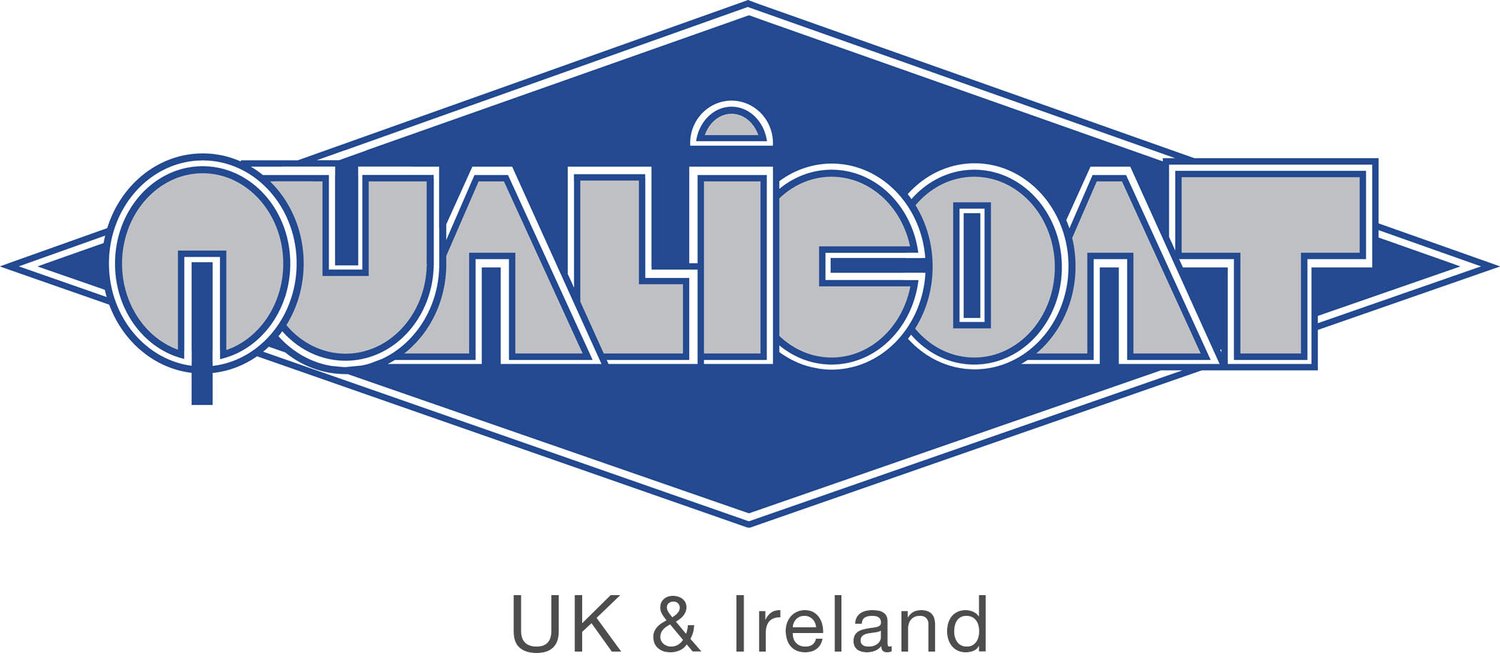QUALICOAT’s Third Party Accreditation
Powder coat application
British Standards offer a respected specification are often used across the globe to recognise a ‘standard’ for manufacture or provide a service. By specification of a standard you are asking for a product or service that will fulfil its duty in use in any particular industry. However, as a specifier you rely on the credibility of the supplier to ensure that they maintain the consistency of the standard by checking and testing product and processes. The same can be said for many other national standards.
If a supplier fails to meet the level of specification within a given standard, often products can be replaced, but what happens when this cannot be achieved? Usually lengthy legal challenges take place costing time and money. Citing architectural powder coating as an example, it is not possible simply to remove the product and replace it as coated products are built into a building project. Often the final position for such failures of specification on installations is somewhat of a compromise. As we all know, it is better to get it right to start with, which is the holy grail for any specifier on behalf of their client.
Turning to third party accreditation, a process that protects both the specifier and the client, surely this should be something that we should be insisting on? Often critical specifications are inspected by consultants, but is this really necessary, would it not be better for the supplier themselves to lay bare their processes so a third party can qualify the supplier against a standard for all production?
Simply put, third party accreditation invites an independent person or company the responsibility to undertake process and product checking to ensure the product or service meets the quoted standard. The result gives the client confidence that the product will fulfil their specified needs whilst the supplier is also qualified as a supplier of quality product.
The Association QUALICOAT has placed third party accreditation at the heart of their architectural powder coating specification. As a global specification, when used across the UK & Ireland, the specification is managed by ‘QUALICOAT UK & Ireland’ with offices based in the West Midlands.
So what is the QUALICOAT specification and how does it differ from the BS EN 12206 standard for powder coating? First of all it is fair to say that the much smaller British Standard is largely covered by the much larger and more up to date QUALICOAT specification, simply because it is the correct way to powder coat architectural profiles. The difference is that the QUALICOAT specification is far more precise in giving details of process and process control parameters offering a far better consistency in quality output.
So, who writes this more detailed QUALICOAT specification? Surprisingly the very members themselves acting in working groups consisting of members across the globe. Why? In order to offer the best possible quality of architectural powder coating for a long sustainable life expectancy. All updates to the specifications are a result of detailed research by dedicated working groups only made up of employees of member companies.
We have all said at sometime ‘put your money where your mouth is’, well this is exactly what QUALICOAT members do on a regular basis. They not only sign up to a more onerous QUALICOAT specification when they become members, but also agree to invite and pay for unannounced independent audits from a third party company. All current QUALICOAT licence holders can be checked on the main qualicoat.net website and on the UK & Ireland’s qualicoatuki.org website.
IFO from Germany are QUALICOAT UK & Ireland nominated independent test house who are regularly in the UK to undertake twice yearly unannounced inspection of coating members. Reports are issued to the Association and member noting any non-compliances against the QUALICOAT specification. Minor non-compliance issues, rare as they are, may be reinspected, unannounced, again in a short period, more critical non-compliance issues could mean that the coater will lose their licenced status and will not be able to use the QUALICOAT name in any of their business dealings.
Members meet four times a year to discuss progress of the working groups and to review updates to the specification which are often implemented as soon as they are released.
Each QUALICOAT member prides themselves on offering high quality coating, so any QUALICOAT licence holder coater not only signs up to offer the enhanced specification but also proudly carries the credibility of one of the worlds most wide reaching specification in building construction.
But, it doesn’t stop there, to ensure vertical integration with quality powder producers and aluminium pretreatment systems providers, both these supply chain providers also have meet the QUALICOAT specification and follow a similar third party inspection regime. All major powder suppliers are QUALICOAT licenced as well as many of the chemical systems companies for pretreatment. Integrating these companies into working groups ensures that enhancements to the specification, which occur in real time, meet with the approval of the complete supply chain. So quality products supplied to quality powder coaters who then are able to offer possibly the best powder coating finish specifiable.
Finally, in the words of a very famous entrepreneur ‘one more thing’! In the Association‘s pursuit of the highest quality architectural powder coating, recently launched is QUALICOAT 3.0. Over the last decade as we use more recycled aluminium the Association has recognised that poor quality recycled content does affect the sustainability of the powder coating. A QUALICOAT 3.0 specification targets the aluminium processor to ensure that their output of extrusion or sheet aluminium reaches strict tolerances for both process and contaminant content to ensure the longest possible surface coating life expectancy. This specification is now live and open to specifiers to use.
Please contact your local QUALICOAT coater or head office in the West Midlands should you have any specification questions.

